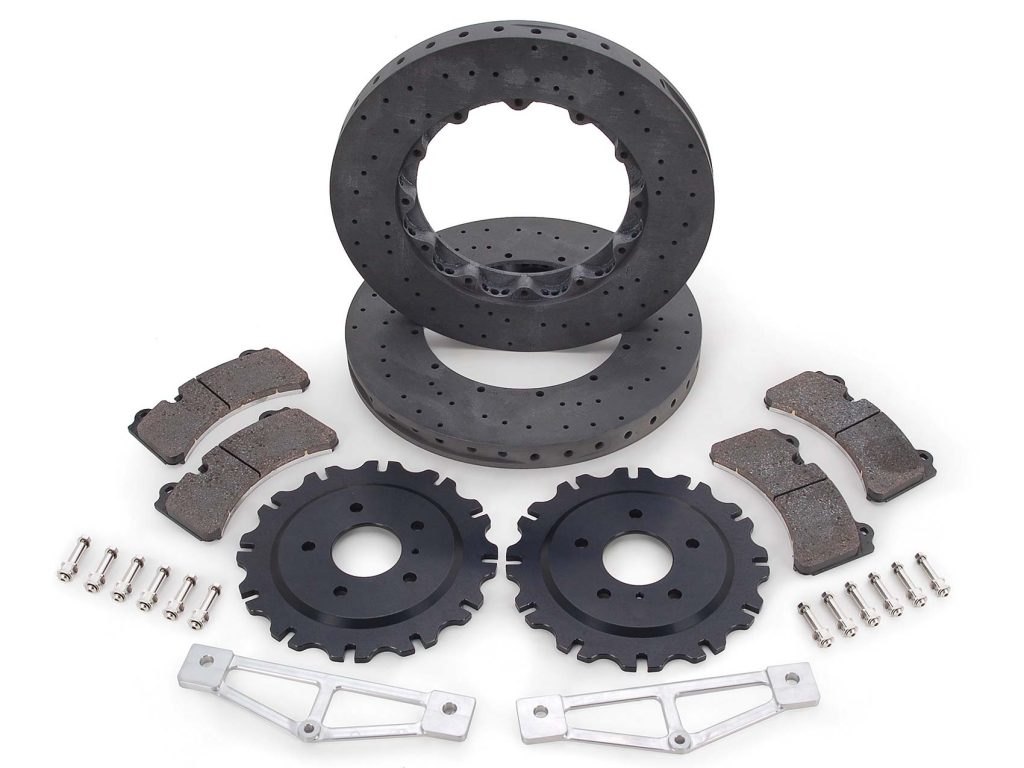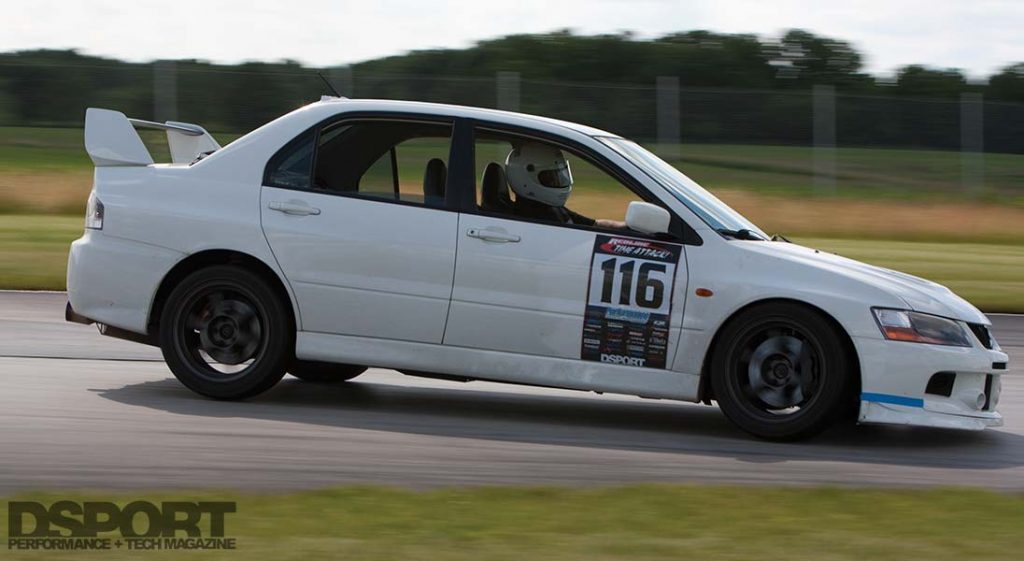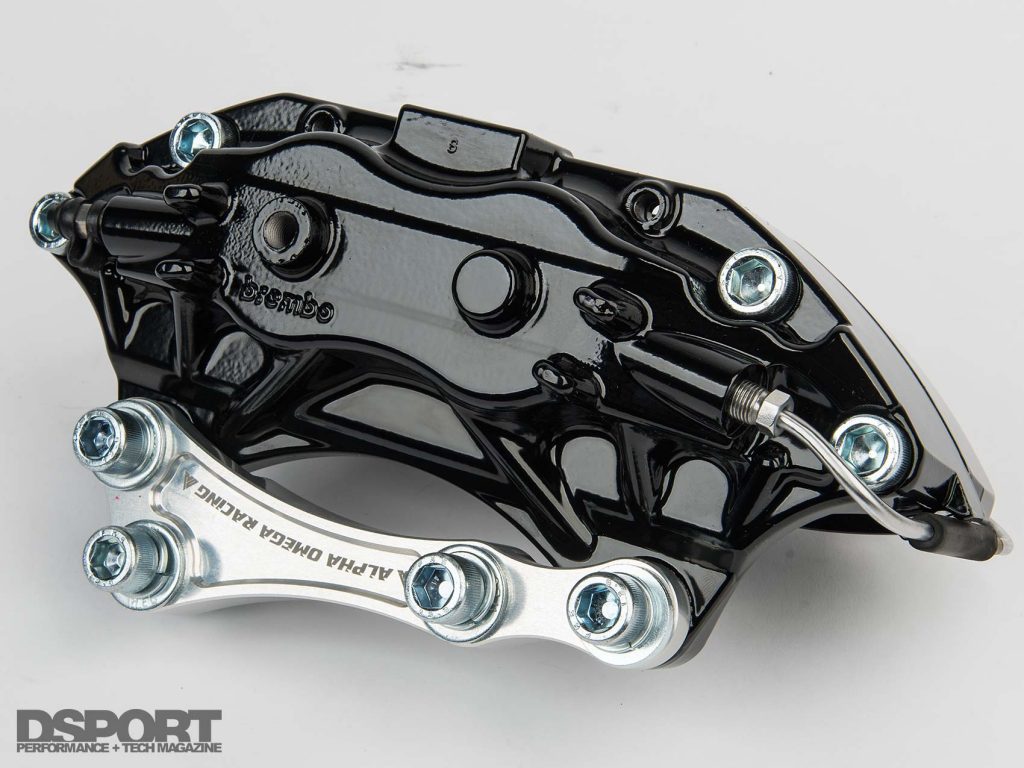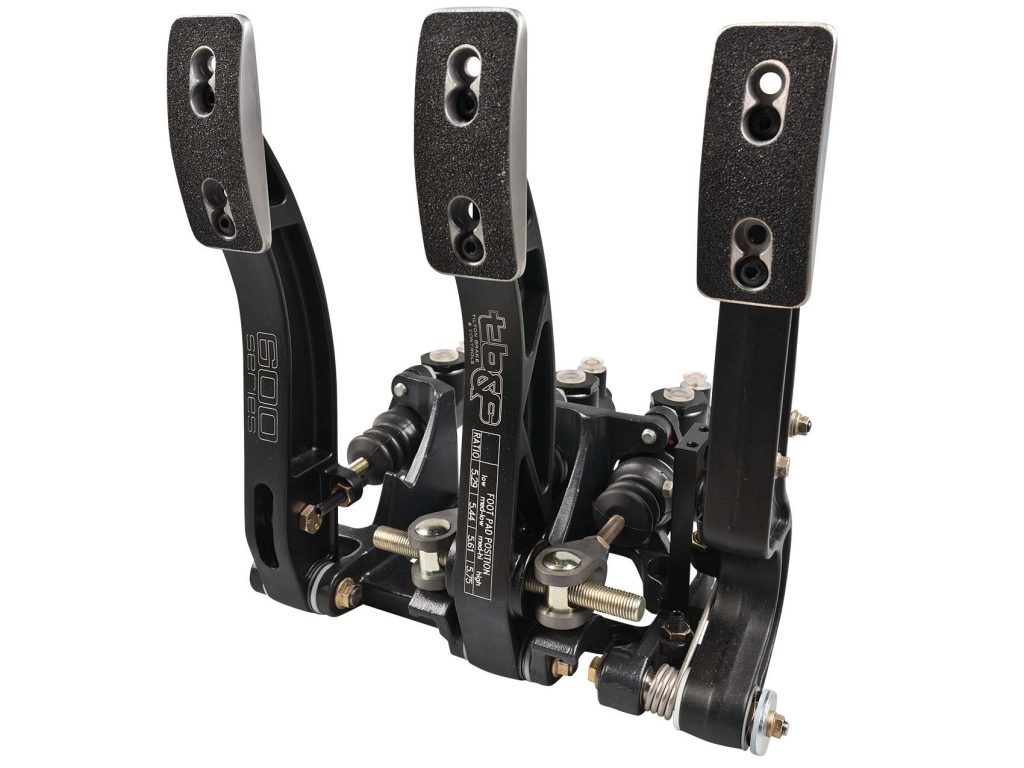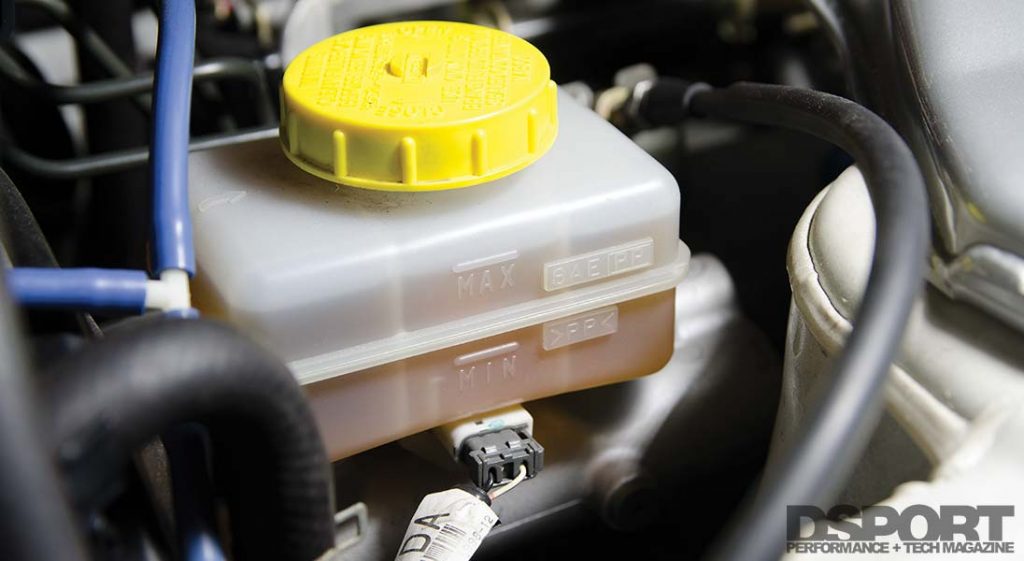Minimizing stopping distance is often a goal of a brake upgrade. While it’s possible that a brake upgrade may result in decreased stopping distance, it’s important to understand that the ability of the brakes to stop a vehicle in a shorter distance is entirely dependent upon the amount of grip available from the tires. How quickly a vehicle can stop is dependent upon how quickly a wheel can be braked (slowed) before it loses traction. Anything we can do to improve traction, (i.e. change to a tire with more grip) or improve the balance of weight over the tires, allows us to reduce stopping distance. When an active suspension system counters the vehicle’s natural tendency to nose dive when the brakes are applied, more weight remains over the rear wheels. In turn, this improves the amount of grip at the rear tires and more brake torque can be applied to slow the vehicle quicker. In addition to the suspension, the bias of the brake system will also affect braking distance. If there is too much bias toward the rear, the rear brakes will lock before the front. Too much bias toward the front and the front brakes will lock before the rear. While an ABS system might prevent the system from actually locking up, braking distance will still suffer if the brake bias is off. This is why your stopping distance may get worse instead of better with some big brake upgrade on the front of your vehicle that were not engineered to work with the factory rear brakes.
When the brake bias is not properly set, a vehicle may nose dive on hard braking. Unloading the rear wheels prevents them from helping to stop the vehicle. Do upgrades that retain bias.
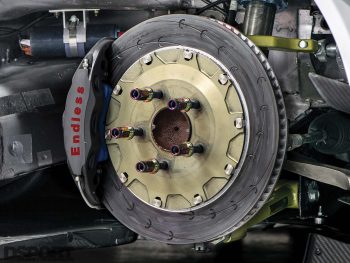 Having a brake system that can deliver repeatable performance during extended periods of abuse requires a brake system with an adequate thermal capacity and cooling. When the rotor mass and brake cooling is too little and the energy being transferred to the rotor and pads causes temperatures outside the ideal operating range, brake performance will suffer. Many times the result is a boiling of the brake fluid in the system. Once this occurs, all bets are off and the pedal turns to mush. If high-performance brake fluid avoids boiling, there is still a chance that the rotor and pad will operate beyond the ideal temperature range. This can cause reduced braking performance along with accelerated pad and/or rotor wear. Larger rotors (bigger OD and/or thickness) can hold more thermal energy than smaller rotors. This is one advantage to a “big brake” upgrade. Improvements to the brake cooling system also allow the brake system to deal with more energy. Pad compounds will have a range of temperature operation. It’s imperative that the right compound is chosen for the application.
Having a brake system that can deliver repeatable performance during extended periods of abuse requires a brake system with an adequate thermal capacity and cooling. When the rotor mass and brake cooling is too little and the energy being transferred to the rotor and pads causes temperatures outside the ideal operating range, brake performance will suffer. Many times the result is a boiling of the brake fluid in the system. Once this occurs, all bets are off and the pedal turns to mush. If high-performance brake fluid avoids boiling, there is still a chance that the rotor and pad will operate beyond the ideal temperature range. This can cause reduced braking performance along with accelerated pad and/or rotor wear. Larger rotors (bigger OD and/or thickness) can hold more thermal energy than smaller rotors. This is one advantage to a “big brake” upgrade. Improvements to the brake cooling system also allow the brake system to deal with more energy. Pad compounds will have a range of temperature operation. It’s imperative that the right compound is chosen for the application.
By using a caliper spacer bracket, an OEM type caliper can be relocated to allow for a larger diameter brake rotor. A larger diameter rotor will increase brake torque for a given line pressure.
As for pads and rotors that last forever with no noise and no dust, you can’t have it all. While today’s pad technology is better than ever, full-race pads that rely upon sintered iron are going to be noisy. Still, new compounds can deliver improved performance over previous formulations. Some track and even street pads are going to be dusty. Whatever the pad and rotor combination selected, a proper break-in and bedding of the pads and rotors is a must for best performance. The process of properly bedding the pads to the rotors will leave a transfer layer on the rotor surface that provides maximum performance. Check with the pad and rotor manufacturers for bed-in procedures and follow them.
Minimizing Braking Distance
- Improve Grip
- Decrease Nose Dive During Braking
- Ensure Available Brake Torque is Adequate
- Active Suspension Tuning
- Corner Weight the Vehicle
Aftermarket pedal assemblies often have adjustable pedal ratios. The pedal ratio and the size of the master cylinders selected will determine pedal travel and effort. The balance bar allows bias to be adjusted.
Brake Pedal Assembly
Most street cars and some competition vehicles will utilize the OEM brake pedal assembly. Dedicated race cars will tend to rely upon an aftermarket pedal assembly. In either case, the purpose of the brake pedal assembly is the same. The assembly must multiply the amount of force the driver applies at the pedal and direct this multiplied force into the master cylinder. On brake systems that do not have “power assist,” the multiplication is generally between five and seven times the input force. This is termed a 5:1 to 7:1 ratio. A brake system with a 6:1 ratio will multiple a 100 pounds of force applied to the pedal into 600 pounds of force applied into the master cylinder. If the bore size of the master cylinder is 19mm (0.75-inch), it will have a piston area of about 0.44 square inches. Applying 600 pounds of force through the pedal assembly to just 0.44 inches of master cylinder piston area produces about 1,360psi of pressure in the brake lines. On vehicles with power-assisted brake systems, the pedal ratio is usually between 3.5:1 and 4.5:1. These low ratios require less pedal travel. However, these low pedal ratios also produce higher pedal effort. Fortunately, this higher pedal effort is not realized by the driver thanks to the power assist mechanism.
Pedal Effort & Pedal Travel Influencers
- Pedal Ratio
- Master Cylinder Bore Size
- Power Assist Factor
- Total Caliper Area
- Flexible Hose Compliance
- Caliper Stiffness
LOWER Ratios: Increase pedal effort, decrease required pedal travel
HIGHER Ratios:: Decrease pedal effort, increase required pedal travel
Remember: “The advantage of a low ratio is a decreased amount of required pedal travel. However, the disadvantage of a low ratio is increased pedal effort.”
Brake Master Cylinder
The brake master cylinder converts mechanical force from the pedal assembly into hydraulic pressure in the brake lines. Like the pedal ratio and the total caliper piston area, the diameter of the bore in the brake master cylinder will also play a role in determining both pedal travel and pedal effort. When all components are left the same, changing to a smaller bore master cylinders will require more pedal travel but less effort, while a change to a larger bore master cylinder will result in less pedal travel but more pedal effort.
Smaller Bore Size: More Pedal Travel, Less Pedal Effort
Larger Bore Size: Less Pedal Travel, More Pedal Effort
Just as there is a pedal ratio, there is also a ratio that describes the relationship between master cylinder piston area and caliper piston area.
Brake Torque
- Line Pressure
- Caliper Piston Area
- Mean Radius to Center of Pad
- Coefficient of Friction (u)
Brake Power Booster
OEM vehicles equipped with “power brakes” include a “booster” in the system that multiplies the pedal force into the master cylinder. These systems most often use the vacuum created by the engine to assist the force applied to the master cylinder when the brake pedal is pressed. Since these devices reduce pedal effort, a lower pedal ratio is employed to provide the proper amount of pedal travel.
When the power assist system is deleted from a vehicle, the pedal ratio and/or master cylinder bore size must also be changed to compensate. Failure to increase the pedal ratio or decrease the bore size of the master cylinder will result in a pedal with little travel that is too hard to push for full brake application. To see the amount of assist from the power brake booster, a test can be done. First, you hook up a pressure gauge at your calipers bleed screw. With the engine not running, you apply a set amount of force to the pedal (can put a scale in between your foot and the pedal). For that force, let’s say 50 pounds, you record the amount of pressure in the lines at the caliper. You repeat this test with the engine running. The pressure at the caliper may be 3 to 5 times higher thanks to the booster assist. The ratio of the pressure with the assist on and off will describe the brake booster ratio. The pedal ratio, master-cylinder to caliper area ratio and the brake power booster ratio all combine to determine pedal effort and pedal travel.



